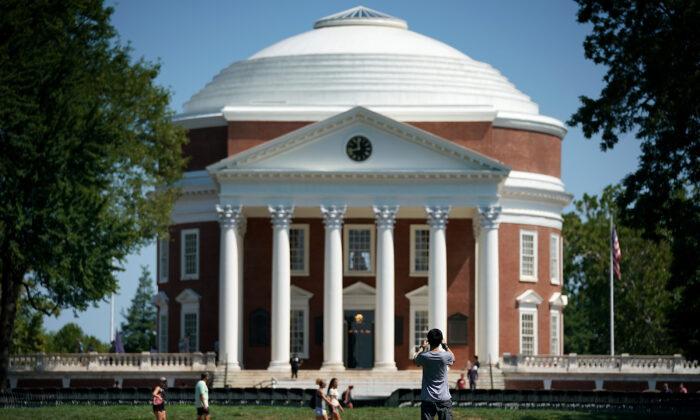In the latest addition to a list of historical monuments being removed from the city of Charlottesville, Virginia, a statue of pioneer and Revolutionary War officer George Rogers Clark left its pedestal at the University of Virginia (UVA) campus on July 11.
George Rogers Clark was born in Albemarle County, where UVA is located, in 1752. Dubbed “Conqueror of the Northwest,” he led a Virginia militia during the Revolutionary War and played a key role in securing the Northwest Territory from the British and their native allies.

The statue that commemorates Clark was erected in 1921 and commissioned by Paul Goodloe McIntire, after whom UVA’s art and music departments are named. McIntire also funded Charlottesville’s statues honoring Robert E. Lee, Thomas “Stonewall” Jackson, and the Lewis and Clark expedition.
A crew removed statues of the Confederate commanders from the city on the morning of July 10. A statue depicting 19th-century explorers Meriwether Lewis, William Clark, and Sacagawea, came down hours later.
The movement to dismantle monuments that are deemed to have offensive historical connections is also targeting the statue of Thomas Jefferson, which sits in a rotunda at the center of the UVA campus. Jefferson, one of the Founding Fathers born in Virginia, founded the university in 1819.





